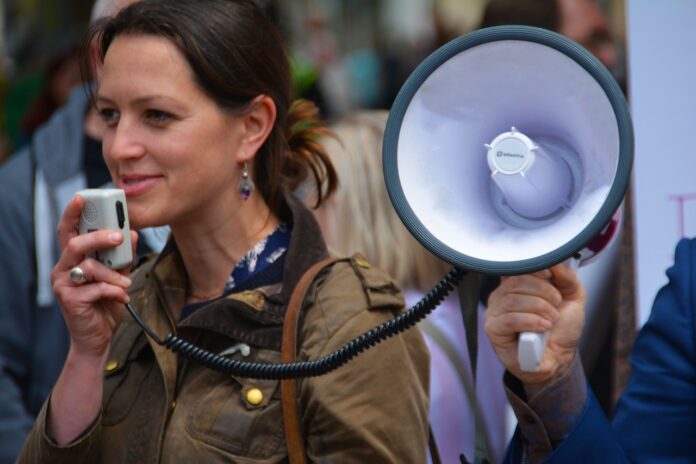Covering the company’s rear end is rarely mentioned in mission statements, but it is always the number one priority. Many US businesses have long assigned staffers to end meetings with disclaimers like, “We’re not making promises,” or “Results will depend on 17 variable factors.”
For normal talkers, however, there’s only time for three or four disclaimers as the room empties. That’s why over 20,000 companies have assigned people who can talk rapidly – like at the end of the sweepstakes commercials – to become “speed disclaimers.”
A good disclaimer can speak 220 words per minute and cover 20 points in 43 seconds – ensuring that if someone tries to blame anyone for anything at all, it can truthfully be said, “That was disclaimed at the meeting.”
Here are just two success stories that began with speed disclaiming:
- Marie Santoni, of ReFluxx in Reno Nevada, ended a presentation eight years ago with 22 disclaimers covering everything from not being responsible for paper cuts to suing anyone who hurt ReFluxx’s feelings. This impressed then-CEO Scott Temple so much that he offered her a cranberry muffin. Four years later, Santoni overthrew Temple in a power standoff and today she is the CEO.
- James Polowicz started as a financial proponent at Detroit’s WillisWillis. So great was his speed disclaiming – an average of 28 disclaimers in 17 seconds – that he was relieved of all other duties just to practice his skills. Today he earns over $6 million per year.
NOTE: The definition of the word “success” can vary from company to company; while speed disclaiming may support a career, a person is ultimately solely responsible for their advancement; the 28 disclaimers in 17 seconds was based on an analysis of total disclaimers, averaged over a period of 18 months.










